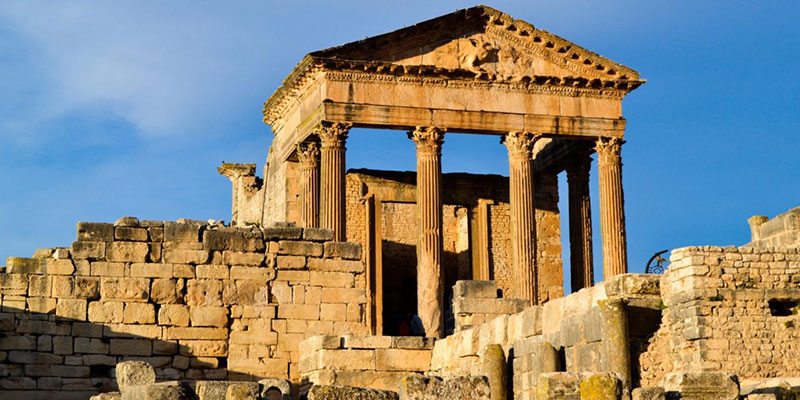
This UNESCO World Heritage site offers a captivating glimpse into the past, with its well-preserved structures, intricate mosaics, and grand amphitheater. In this article, we will explore the history, attractions, and significance of Dougga, inviting you to embark on a virtual journey to this extraordinary historical landmark.
Dougga, also known as Thugga, is located in northeastern Tunisia, near the modern town of Téboursouk. Its history dates back to the third century BC when it was established as a Berber settlement. The city subsequently came under Roman rule in 46 BC, following the fall of Carthage, and experienced its heyday between the first and third centuries AD. During this period, Dougga underwent significant urban development, transforming it into a thriving center of Roman culture and influence.
The city's prosperity began to wane after the fifth century AD, with the fall of the Roman Empire and the subsequent invasions by Vandals and Byzantines. Eventually, Dougga was abandoned in the early Islamic era, leaving its structures to the mercy of time and nature. Nevertheless, the site's remote location and limited access contributed to its remarkable preservation, allowing modern visitors to marvel at its historical treasures.
Visitors to Dougga can explore a wide range of historical monuments and structures, each offering a unique insight into the city's past. Some of the most notable attractions include:
Dougga holds immense historical significance not only for Tunisia but also for the world. Its wealth of well-preserved structures and artifacts offers invaluable insights into ancient Roman urban planning, architecture, and culture.
Moreover, Dougga serves as a prime example of cultural syncretism, illustrating how different cultures and societies have intermingled and influenced one another throughout history. The city's diverse architectural styles and its fusion of Berber, Punic, and Roman elements attest to the rich tapestry of cultures that have shaped Tunisia's past and present.
Dougga is located approximately 130 kilometers (80 miles) west of Tunis, the capital city. To reach Dougga, visitors can opt for a private tour, rent a car, or join a guided group excursion. It is recommended to allocate at least half a day to fully explore the site and take in its many attractions.
The site is open daily from 9:00 am to 5:00 pm, with a modest entrance fee for foreign visitors. It is essential to wear comfortable shoes and dress appropriately, as the site consists of uneven terrain and limited shade.
Dougga is a well-preserved Roman city in Tunisia, recognized as a UNESCO World Heritage site. It is significant for its diverse architectural styles, intricate mosaics, and well-preserved structures, such as the Capitoline Temple and theater. Dougga offers valuable insights into ancient Roman culture and urban planning, as well as the blending of different cultures and societies throughout history.
Visitors can reach Dougga via private tour, rental car, or group excursion. The site is approximately 130 kilometers (80 miles) west of Tunis. It is recommended to bring comfortable shoes, a hat, sunscreen, and water. The entrance fee for foreign visitors is around 10 Tunisian Dinars (approximately $3.50 US).
Visitors should allocate at least half a day to explore Dougga fully. The site features numerous attractions, including the Capitoline Temple, theater, Libyho-Punic Mausoleum, and forum, as well as intricate mosaics and various residential structures.